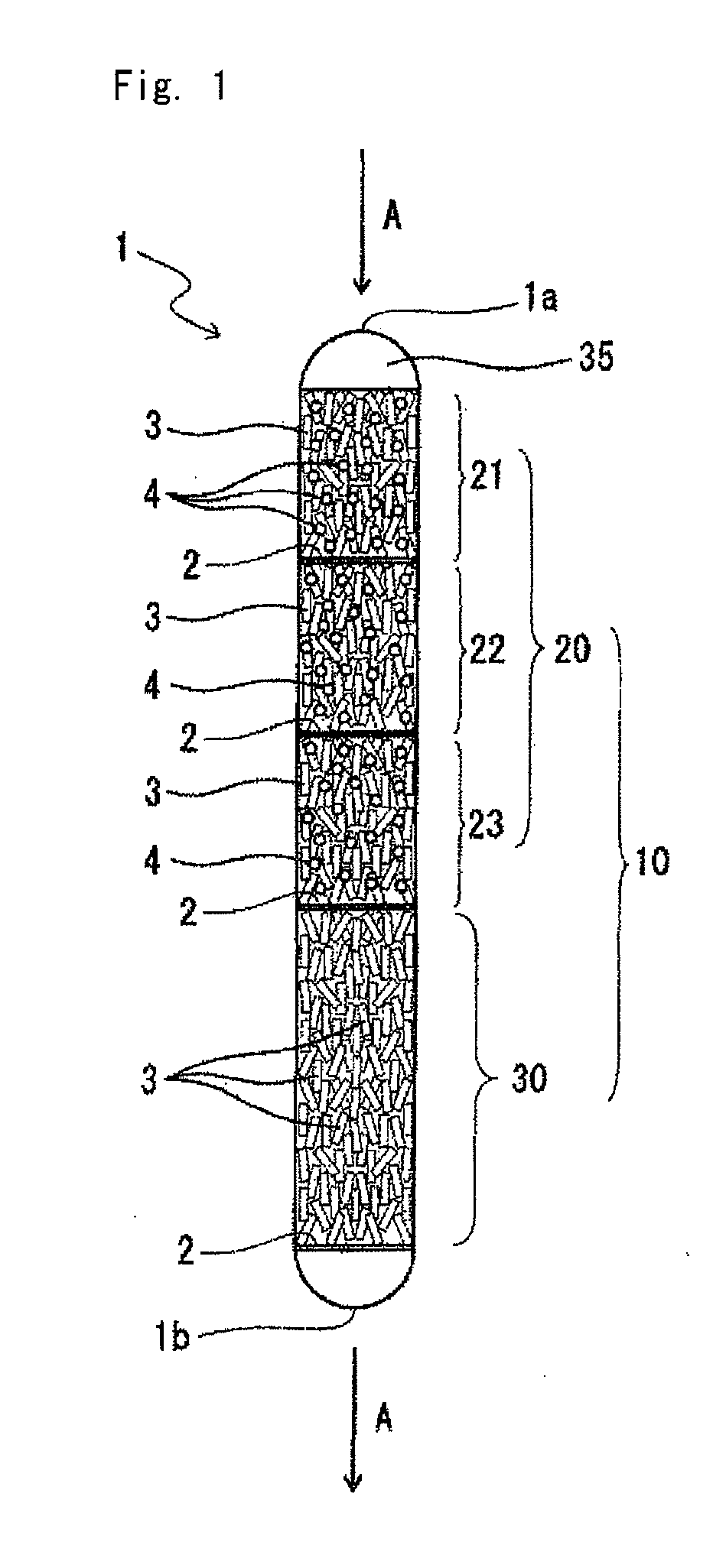Process for producing chlorine
a technology for chlorine and chlorine atoms, applied in the preparation of chlorides, physical/chemical process catalysts, metal/metal-oxide/metal-hydroxide catalysts, etc., can solve the problems of adverse influence of catalysts and unsatisfactory operation costs
- Summary
- Abstract
- Description
- Claims
- Application Information
AI Technical Summary
Benefits of technology
Problems solved by technology
Method used
Image
Examples
example 1
[0077]As shown in FIG. 1, the catalyst was charged in the reaction tube 1. The following materials were used in this charge of the catalyst:
Reaction tube 1: a quartz reaction tube with an inner diameter of 21 mm, equipped with a thermometer sheath tube with an outer diameter of 4 mm
Partition Material 2: quartz wool
Catalyst 3: the supported ruthenium oxide catalyst obtained in Reference Example
Diluent 4: γ-alumina balls with a diameter of 3 mmφ [“NKHD-24” with a BET specific surface area of 311 m2 / g and a pore volume of 0.45 ml / g, manufactured by Sumitomo Chemical Company, Ltd.]
[0078]The catalyst was charged as follows. Firstly, the partition material 2 was charged in the lower portion of the reaction tube 1. Then, the catalyst 3 (14.2 g) was charged from the upper opening of the reaction tube 1 to form a catalyst packed bed 30 on the partition material 2.
[0079]The partition material 2 was charged onto this catalyst packed bed 30. After that, the catalyst 3 (2.6 g) was mixed with the...
example 2
[0095]The operation was continued while a conversion of hydrogen chloride at the outlet 1b of the reaction tube was maintained at about 85% to thereby produce chlorine in the same manner as in Example 1, except that the operation was stopped at a point of time when 2,700 hours had passed since the start of the reaction. A relationship between the operation time and the average temperature of the catalyst packed beds is shown in FIG. 3.
PUM
| Property | Measurement | Unit |
|---|---|---|
| Percent by mass | aaaaa | aaaaa |
| Percent by mass | aaaaa | aaaaa |
| Percent by mass | aaaaa | aaaaa |
Abstract
Description
Claims
Application Information
 Login to View More
Login to View More - R&D
- Intellectual Property
- Life Sciences
- Materials
- Tech Scout
- Unparalleled Data Quality
- Higher Quality Content
- 60% Fewer Hallucinations
Browse by: Latest US Patents, China's latest patents, Technical Efficacy Thesaurus, Application Domain, Technology Topic, Popular Technical Reports.
© 2025 PatSnap. All rights reserved.Legal|Privacy policy|Modern Slavery Act Transparency Statement|Sitemap|About US| Contact US: help@patsnap.com


